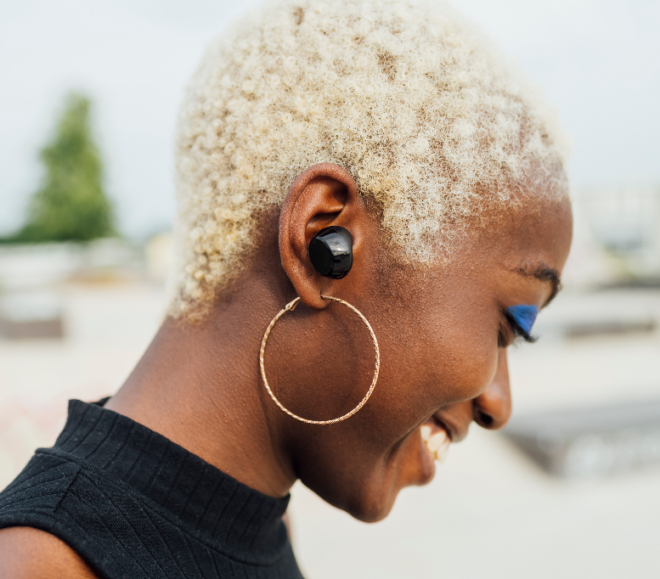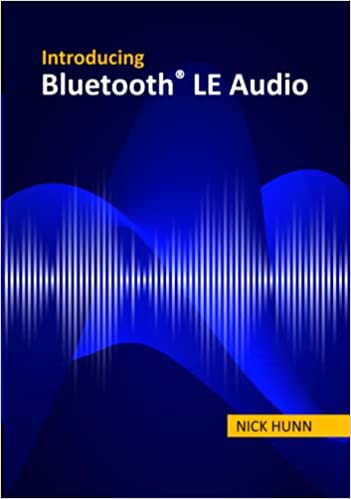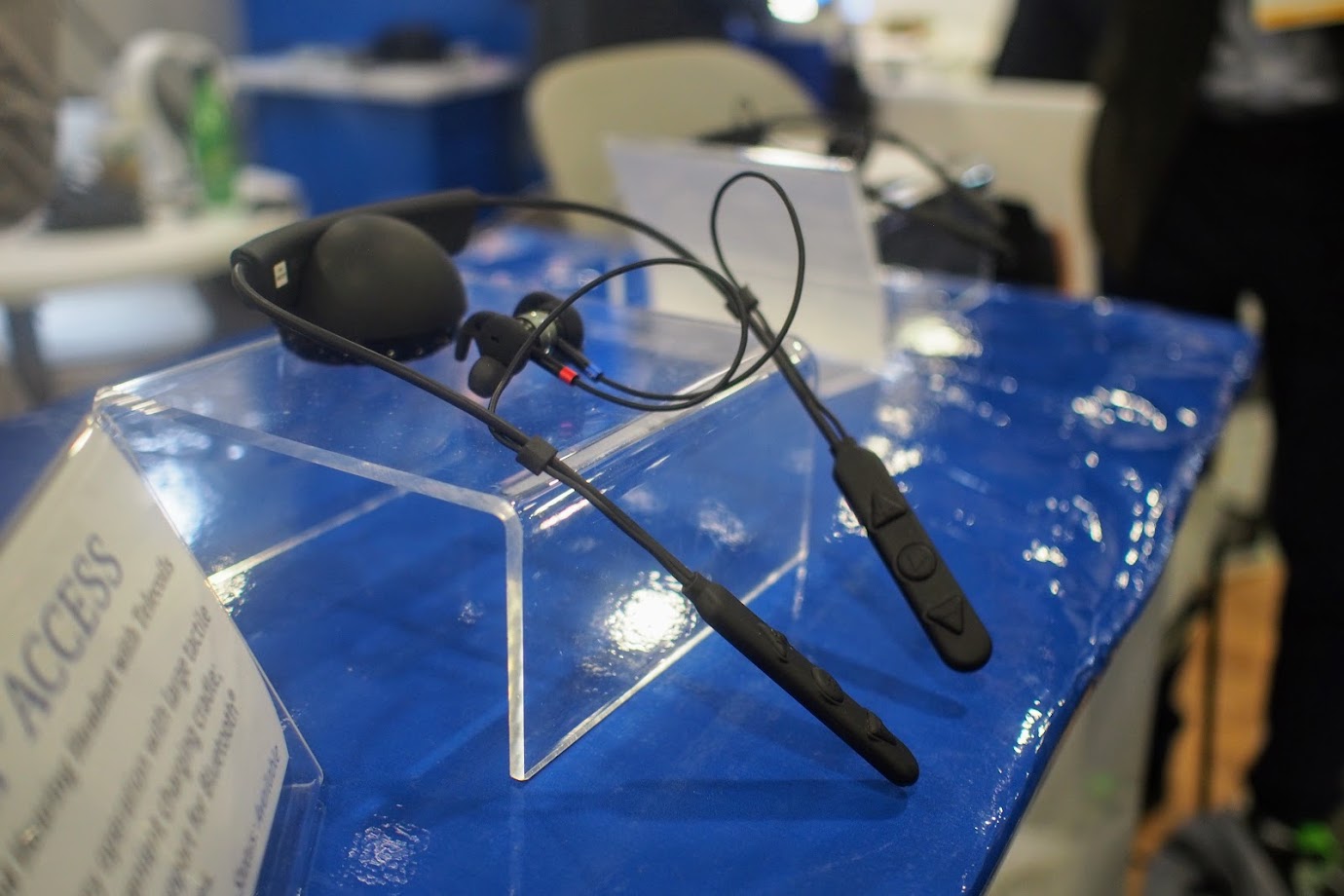
At first glance, hearing aids and Bluetooth® technology appear made for each other.
On one side, you have a low-power audio device worn on the ear. On the other, a wireless technology that’s synonymous with portable, personal audio devices.
But the first Bluetooth hearing aid, the Starkey ELI, didn’t debut until 2005, six years after the first Bluetooth consumer devices hit the market, and it was really just a tiny module that plugged into the bottom of a regular hearing aid. True Bluetooth hearing aids followed in subsequent years, but virtually all of them required users to carry around a third device besides their smartphone and hearing aid: a wireless streamer to relay the sound.
At the time, there was no low-power version of Bluetooth audio technology, so in order to get the long battery life hearing aid users were used to, the streamer was necessary. Bluetooth Low Energy debuted in 2011, but there was no audio component, and it took until 2014 for the first, true standalone Bluetooth hearing aid to appear, the ReSound LiNX.
Since then, other Bluetooth hearing aids have slowly come to market, but now the category is poised for an explosion thanks to two major factors. First, the FDA is expected to finalize guidelines in 2020 for a new class of more accessible and affordable hearing aid thanks to the passage of the Over-the-Counter Hearing Aid Act. And second, the Bluetooth Special Interest Group (SIG) announced Bluetooth LE Audio, which not only enhances the performance of Bluetooth enabled audio but will bring all its benefits to people with hearing loss.
“Bluetooth® technology has brought significant benefits to a huge percentage of the global population, but there’s one community that really hasn’t been able to fully realize those benefits and that’s people that experience hearing loss,” says Ken Kolderup, VP of marketing for the Bluetooth SIG. “And thanks to Bluetooth LE Audio — it’s lower power, it’s higher quality, and it’s multi-stream, we’re able to add explicit support.”
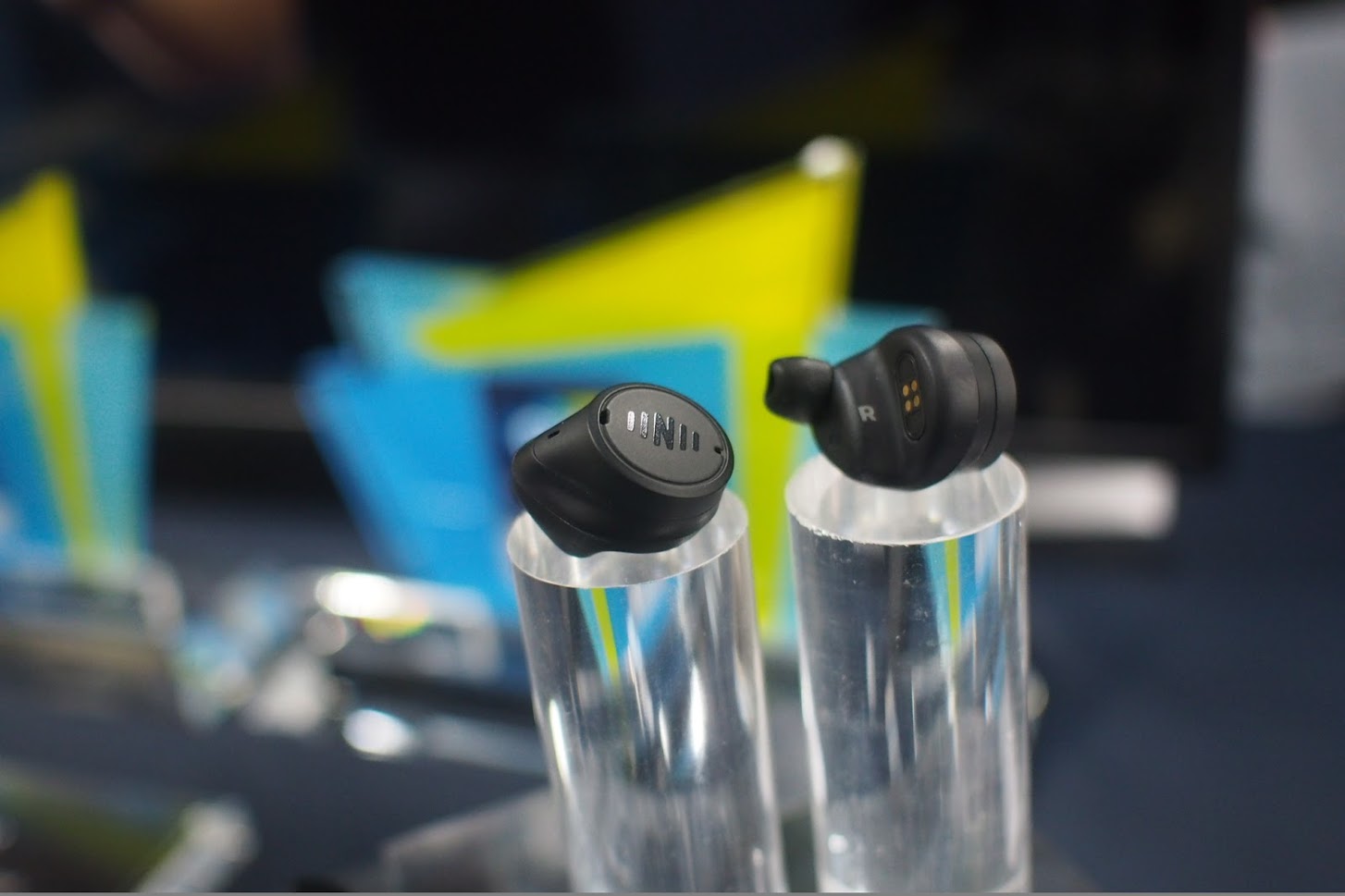
Bluetooth Hearing Aids: The New Class
Some of the latest wireless hearing aids were on display at CES 2020. One of the most compact designs is Phonak’s Virto Black, taking the form factor of a pair of true wireless earbuds. The earbuds alone do a lot to cut noise and enhance human speech for the wearer, but it goes to another level with the Roger, a disc-shaped microphone the user can set down on a table to boost the speech of everyone around it.
The OrCam Hear is similar in concept to the Roger, except it throws a camera in the mix. About the size of a bar of hotel soap, the Hear works in conjunction with Bluetooth® enabled hearing aids and can analyze gestures and faces to figure out exactly who the wearer is speaking to.
Alango’s BeHear Access is a hearing aid with an office, worker-friendly neckband design, with large headset playback controls and a 13-hour battery life in listen mode. And the Oticon Xceed represented traditional behind-the-ear designs, boasting a 360-degree listening feature that’s said to discern the voices of people speaking directly to the wearer, no matter which direction they’re coming from.
Though none of these existing designs and devices incorporate Bluetooth LE Audio (yet), LE Audio’s support for hearing aids will mean the category will be an ecosystem, since audio sources will be able to know a hearing aid is connecting with them and adjust the sound specifically for them. For example, two people — one with hearing loss and one not — would theoretically be able to watch the same TV, each hearing audio tailored specifically for them.
A taste of that technology was on display at CES 2020. Nuheara, a company that makes Bluetooth enabled products for people struggling with hearing loss, showed off its IQstream TV device, which plugs into the optical port of a TV and can stream boosted audio to a viewer with a Bluetooth enabled headset, but only one made by the company.
Bluetooth LE Audio would theoretically mean similar abilities for a wider cross-section of Bluetooth® enabled products, and the tech could be built directly into the TV. At least eventually — the specifications won’t be finalized until later in 2020, and then it will take time for consumer products to support the spec.
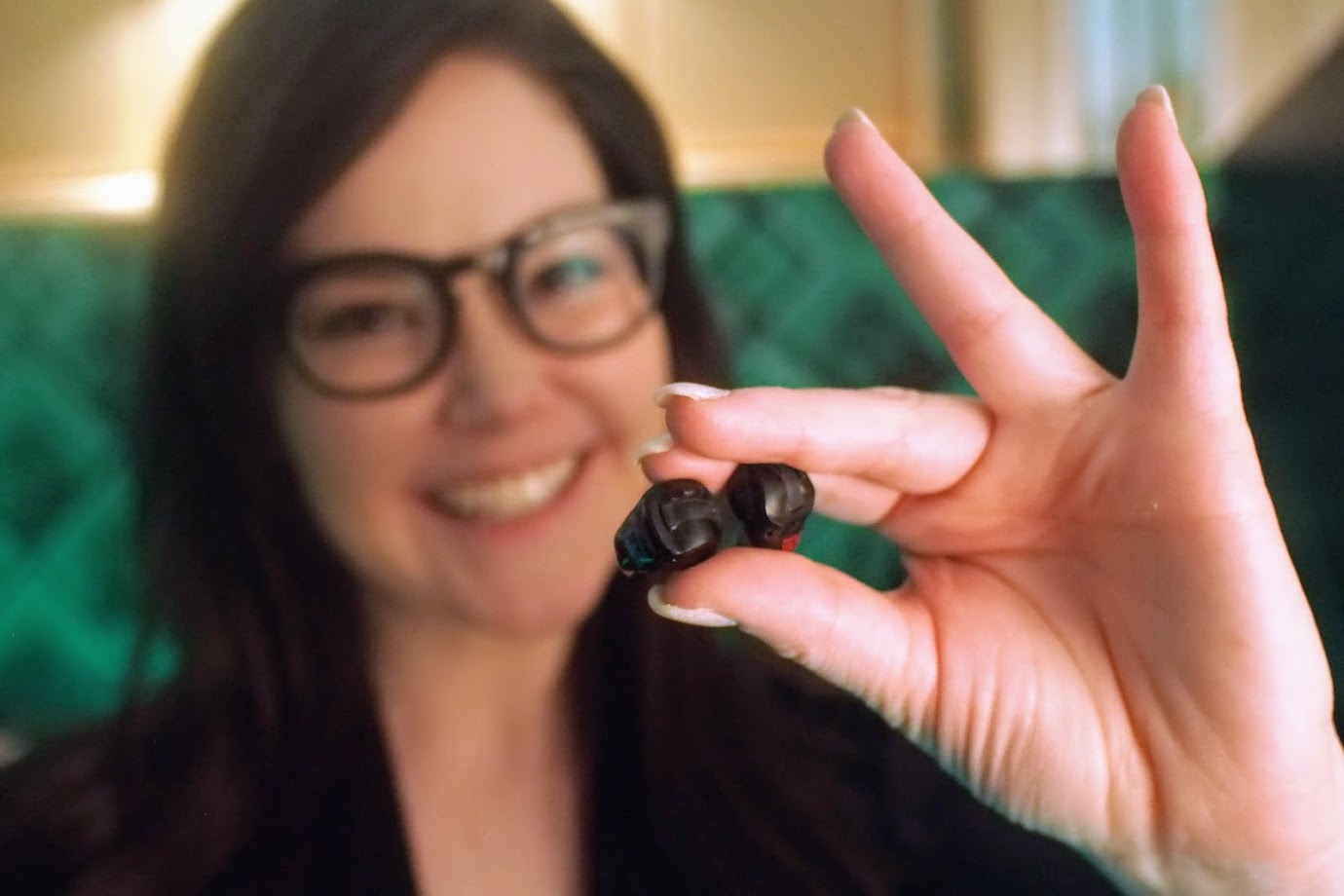
Avoiding the Stigma of Hearing Loss, Wirelessly
But there’s good reason that device makers like Nuheara are paying more and more attention to the hearing-loss market. The number of people with some kind of hearing loss is actually much larger than just the people who buy hearing aids. Studies show people with some degree of hearing loss wait an average of seven years before seeking help, according to Rachel Bishop, an audiologist at Phonak.
With some of the newer earphone models, they won’t have to — at least for a while. As active noise cancellation has become commonplace, some headphone companies are using the same technology to not just kill noise but boost parts of the audio spectrum as well. It requires profiling the user’s hearing, which used to mean a visit from an audiologist, but smartphone apps can do a pretty good job of simulating that experience.
Nuheara’s IQbuds2Max, which debuted at CES 2020, is one of the most evolved examples of this kind of hearable — not a hearing aid, but a pair of true wireless headphones that share some qualities of hearing aids and also include sophisticated features that are good for all, like active noise cancellation.
“The ability to process noise away gives us quite an advantage,” says Justin Miller, CEO of Nuheara. “We’ve fitted an ANC chip [in the earbuds], which gives us the ability to put a third microphone on the inside of the ear. When you put an earbud in you start to hear your own voice louder; we’re able to process that out.”
A downside of relying on wireless earbuds to assist with your hearing is the battery life, which tends to be six hours or less for models with active noise cancellation. Bluetooth LE Audio will address this in the near future.
One feature of hearing aids these new hearing-assistive earphones lack, though, is the stigma, since they don’t just look like earbuds — that’s what they are.
The evolution of the Bluetooth® hearing aid has been long, but all the ingredients are in place for the category’s Renaissance. Soon, those who suffer from hearing loss will be able to choose from a new generation of Bluetooth enabled assistive devices that are versatile, affordable, and may not look like hearing aids at all.

Pete Pachal is a lifelong technology journalist and the Executive Editor of CoinDesk. Pete has served as the chief tech editor for several prominent media brands, including Mashable, PCMag, and the Syfy Channel, and was the Editorial Director of Reviews.com. As a thought leader in tech, Pete has appeared on The Today Show, CNN, CNBC, Fox Business, TDAmeritrade Network, PBS Newshour, NPR, The Daily Show, Cheddar, and more. Pete holds degrees in journalism and engineering physics. His favorite Doctor Who monsters are the Cybermen.
![]()
FEATURED INNOVATION
Bluetooth LE Audio
This latest innovation of Bluetooth® technology supports a host of new audio features, including low power, high quality, and multi-stream capabilities that will enable hearing aids to bring all the benefits of Bluetooth audio solutions to people with hearing loss.

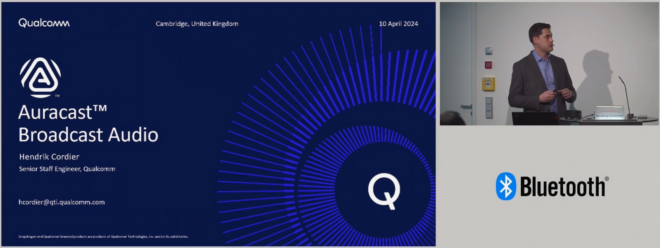



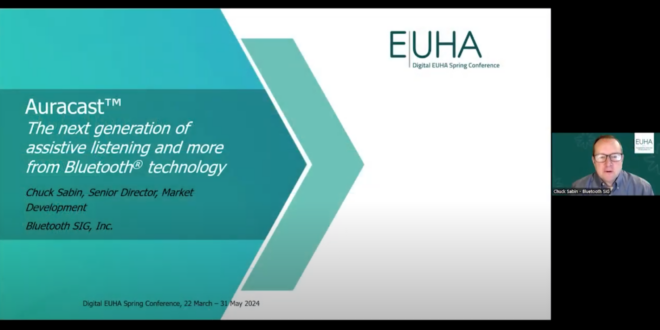

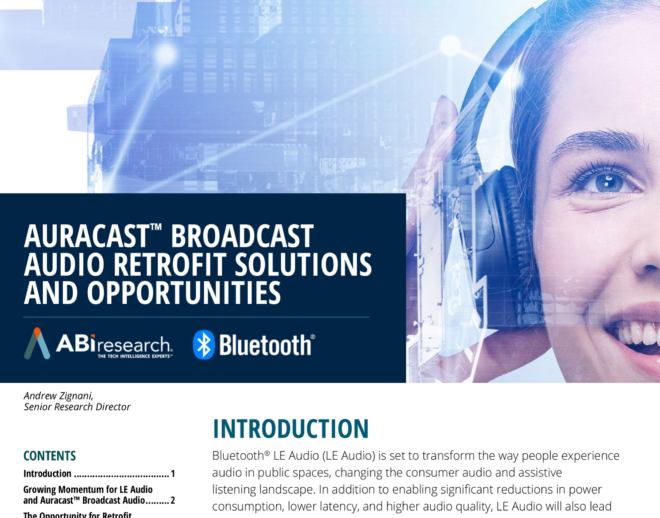
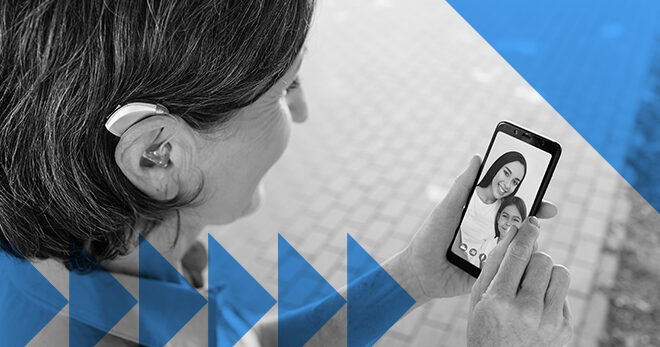
![packetcraft logo tagline[1]](https://www.bluetooth.com/wp-content/uploads/2024/03/packetcraft_logo_tagline1.png)

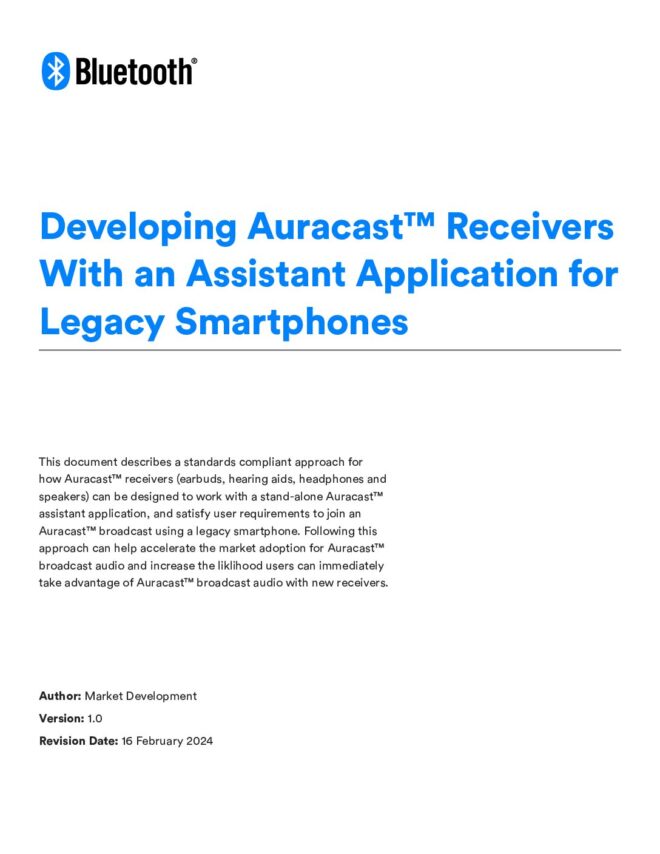
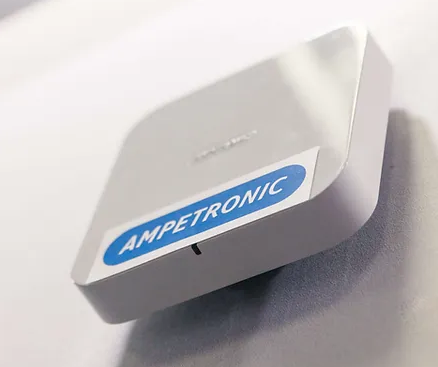
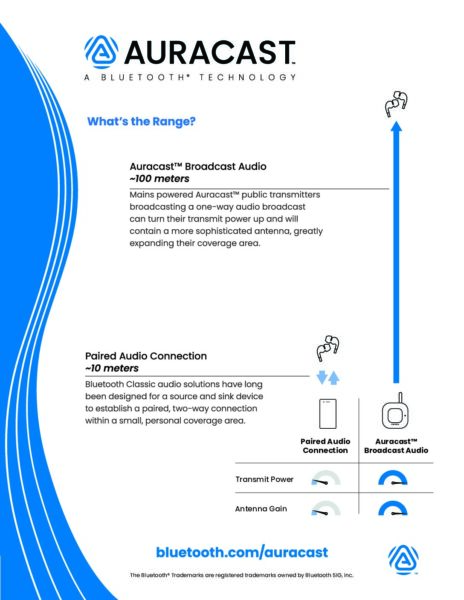
![2312 CES Handout Images FINAL existing pdf 464x600[1]](https://www.bluetooth.com/wp-content/uploads/2024/01/2312_CES_Handout-Images_FINAL-existing-pdf-464x6001-1.jpg)
![2312 CES Handout Images FINAL unlimited pdf 464x600[1]](https://www.bluetooth.com/wp-content/uploads/2024/01/2312_CES_Handout-Images_FINAL-unlimited-pdf-464x6001-1.jpg)


